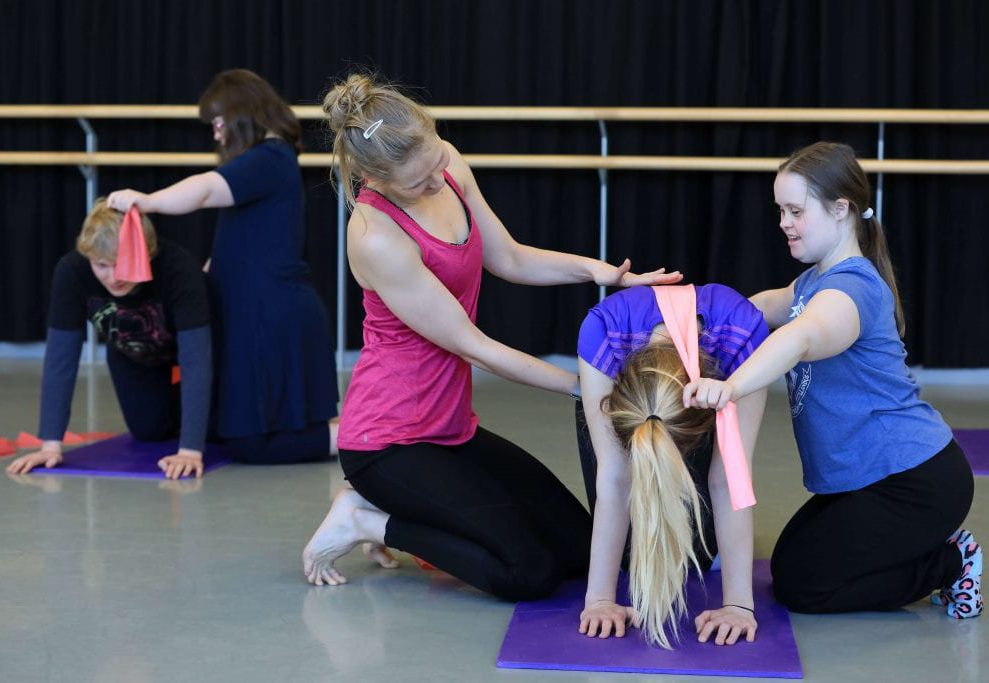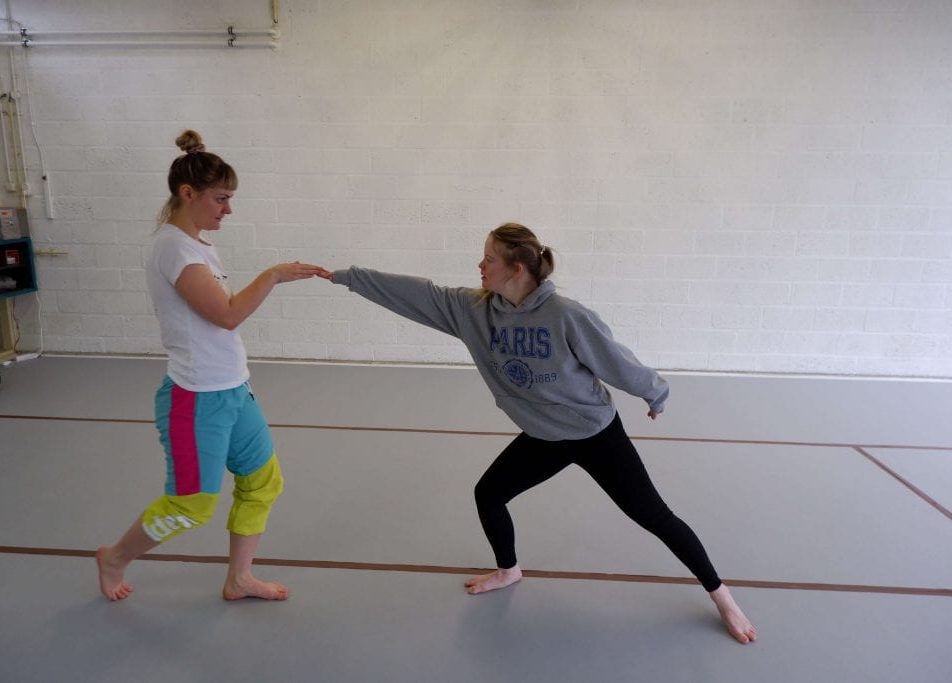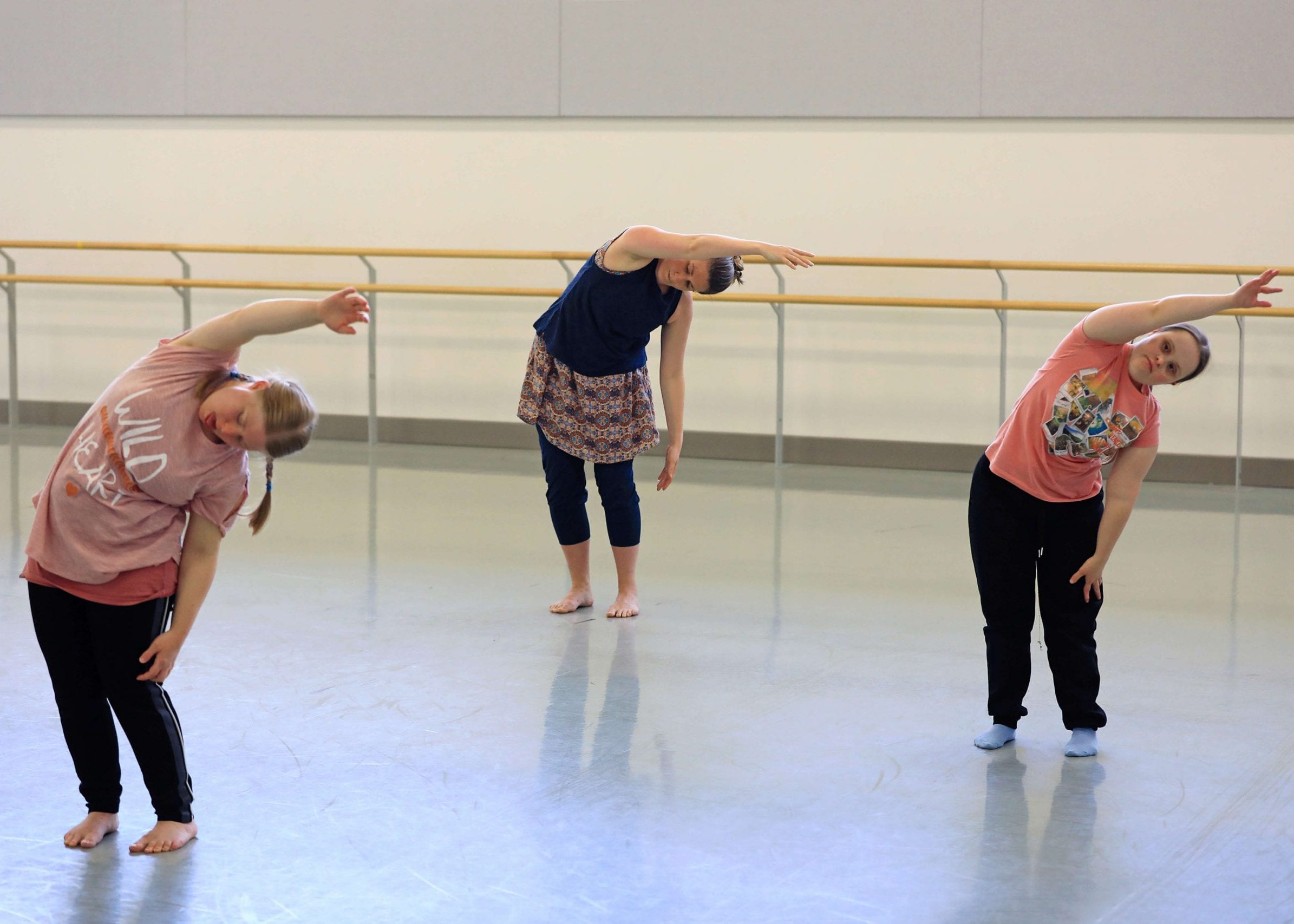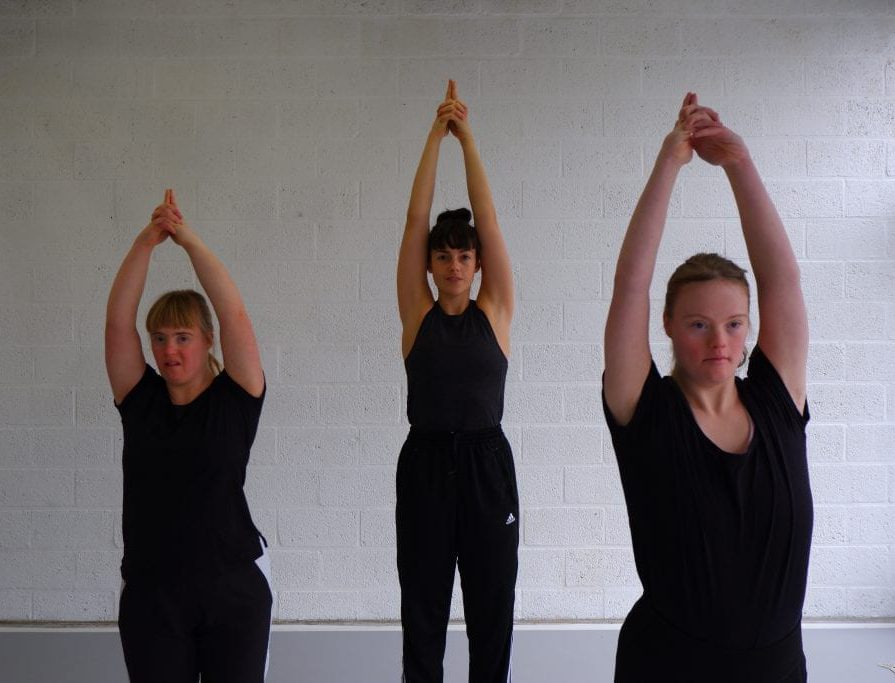Alignment
Alignment refers to the ability to maintain safe posture and placement for dance.
The term ‘alignment’ refers to the ability to maintain safe posture and placement for dance. The purpose of this activity is to develop the dancer’s ability to:
* find and maintain optimal placement of spine, pelvis and arms whilst moving
* articulate the spine with control while maintaining placement in the lower body
* explore these on different planes
This is explored through a guided improvisation with the focus on initiating movement through different parts of the upper body. The dancers are encouraged to try and maintain a static and stable lower body.
Adaptations
Adaptations of this activity include:
* touching two body parts and exploring the movement between them.
* perform it sitting on a chair. This stabilises the body and encourages you to articulate the body in different ways.
Create a set sequence
You can then create a set sequence based on this idea which can be performed with, or without a partner.
* start with the basic movement sequence
* develop through exploring tempo, dynamics and breath
* initiation of movement by peer or teacher can be reintroduced to reinforce the concept
Teaching Guidelines
This activity uses a wide range of teaching methods to appeal to different learning styles. Visual and tactile methods of communication are generally more accessible and effective for dancers with additional learning support needs.
In this activity we used the following methods of delivery. However, you may find others on the list more suitable for your dancers:
Auditory
* verbal instructions
* use of voice (intonation, pace)
* use of music/sounds
* imagery delivered verbally
Visual
* physical demonstrations
* visual imagery (picture, object)
Tactile
* tactile cues given by self, peer or teacher
* physical objects
Kinaesthetic
* experience how the movement feels e.g. resistance, pressure, effortless etc.
Feedback
* verbal feedback from peer or teacher
* visual feedback from peer or teacher
* tactile feedback from peer or teacher
* visual feedback and self-correction




The use of breath should be considered as an integral part of working with the upper body.
More information on the use of breath can be found here.
The use of imagery and objects can be useful when working with the spine:
* elastic spine lengthening – use a resistance band (possibly with knots to represent vertebrae) as a visual and kinaesthetic aid
* wooden snake
* slinky/spring
* puppet with spine drawn on back
* drawing an image of their own backs to get feedback on their body image/alignment
______________________________________________________________________________________________________________________________
Safe practice pointers
* lower back – avoid arching backwards, especially for those with lordosis, as this will increase pressure on the lower back.
* neck – avoid dropping head backwards or putting pressure on head when working with a partner.
The European Commission support for the production of this publication does not constitute an endorsement of the contents which reflects the views only of the authors, and the Commission cannot be held responsible for any use which may be made of the information contained therein.





